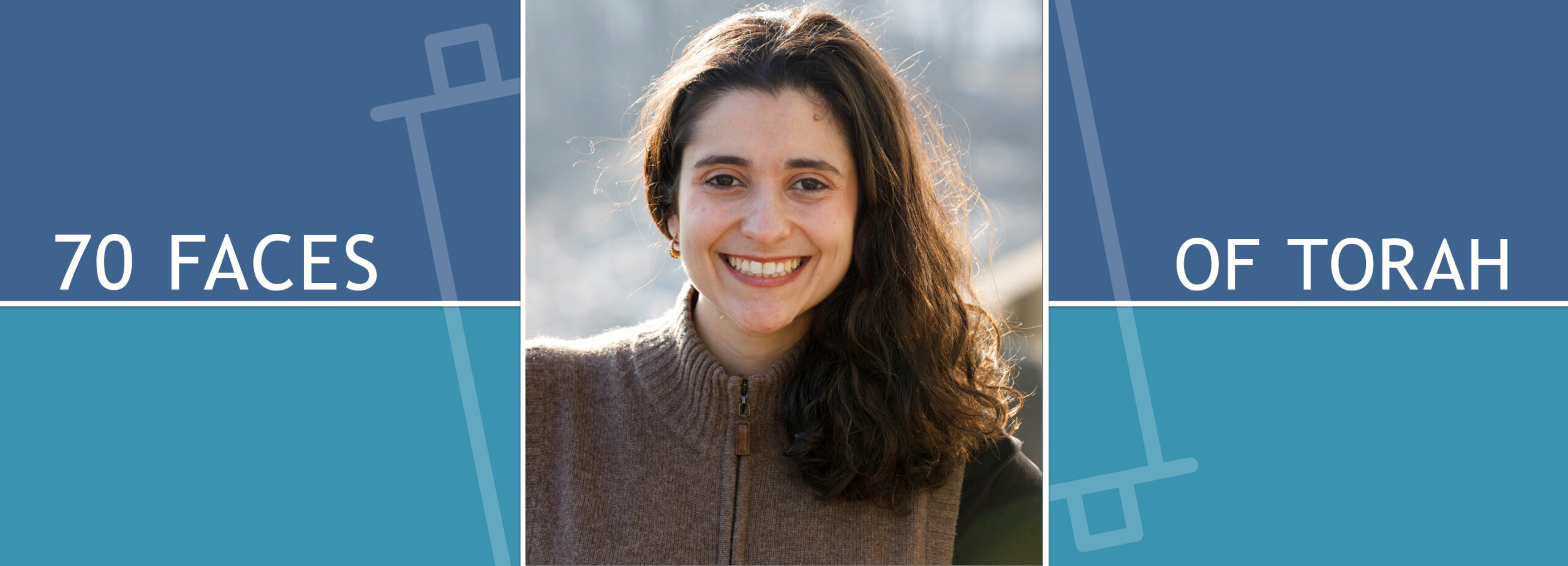Leviticus “After Death, There is Ritual”

Parashat Achrei Mot (Leviticus 16:1-18:30)
The Yom Kippur ritual, described in this week’s parsha, stages the ultimate drama. On this one day, the high priest is invited to peek behind the curtain. The danger is real, and the thrill of coming closer than ever to God is almost palpable. You can imagine his heart racing as he draws near.
And while most temple rituals are remembered only through the chanting of a Torah service, we make a stronger attempt to relive this one. Through the liturgy of the Avodah service in our modern Machzor, we stage a dramatic storytelling, if not a complete reenactment.
The Yom Kippur rituals inspire us to be better people and to better appreciate the gift of our lives. Through the words of the Machzor we approach the edge of the abyss, and together we look over that edge. We imagine a world where our deeds determine our fate, and where we can be saved through Tshuvah, Tfillah and Tzdakeh. We allow ourselves to have a near death experience, to remember our mortality and be humbled by it. As I learned from Rabbi Jason Rubenstein, the Yom Kippur ritual allows us to experience “post-traumatic growth” without ever having been through a trauma.
But what happens when we have been through trauma? When we enter the sanctuary directly from the hospital room? Or the cemetery? While some deaths feel like the natural next step of a life cycle, others are traumatic and deeply unfair. The promised logic of sinners who die and righteous who live doesn’t prove true. Sometimes the good die first. Sometimes children die. Is there room inside the experience of the Yom Kippur ritual for the pain of traumatic loss? In the years when we have witnessed real trauma, the Yom Kippur liturgy can feel off. It can seem as though the ritual was designed for those who have experienced death purely as a metaphor, certainly not for a parent mourning the death of their children.
And yet this parsha tells us that the ritual of Yom Kippur is given at exactly such a moment. The first verse, Lev 16:1 (and in particular the words that we use to title this parsha), reminds us that Aaron is not just the high priest. In the precise moment of first learning about this ritual, Aaron is a father in mourning:
The LORD spoke to Moses after the death of the two sons of Aaron who died when they drew too close to the presence of the LORD.
The Yom Kippur ritual is framed by this opening line. The Torah makes painfully clear that the ritual is meant to be practiced alongside real, personal, untimely death. Not only is the Yom Kippur ritual not anathema to the reality of a parent in mourning, it is inextricably linked to real devastating loss.
Aaron’s sons have died, and their death is traumatic. They died young, and without a clear reason. Their deaths result from an attempt to reach God. The rabbinic tradition struggles to understand this loss. Some attempt to apply the logic of Yom Kippur — if they died, they must have been guilty of something grave and deserved their deaths. Many commentaries and midrashim offer possible explanations for the severity of their punishment. What horrible thing must these boys have done? What had their father done to deserve this?
A Midrash in Tanchuma instead uses their deaths to grapple with the ultimate truth that “the same lot [falls] to the righteous and to the wicked.” This texts warns us against the instinct to try to find fault where it never existed:
“In four places [Scripture] mentions the death of Aaron’s sons, and it also mentions their transgression. And why all this? To inform you that they had only this sin on their hands.” (Midrash Tanchuma, Achrei Mot 6:1)
Aaron’s children died attempting to reach God. They seem to have made a mistake, not committed a mortal sin. How can this “transgression” possibly justify their deaths? The answer is — it can’t. It doesn’t. The midrash acknowledges the human instinct to invent reasons as we search for order in moments of trauma. We struggle to understand a world where children die and so we try to look for more sins. The instinct is logical, and yet we must refrain. You cannot use suffering and death as proof that someone sinned. The math won’t add up. If you attempt to justify death, you will get it wrong.
We are given the rituals of Yom Kippur in the same breath as the news of the death of these righteous boys. We are forced, from the very origin of Yom Kippur theology, to hold both images together — the way the world is, and the way we wish it were. We must hold the chaos and pain of reality alongside the order and promise of carefully crafted ritual theater.
Rabbi Avi Killip serves as Vice President of Strategy and Programs and Director of Project Zug at Hadar. She was ordained in 2014 from Hebrew College’s pluralistic Rabbinical School in Boston. She was a Wexner Graduate Fellow and holds a Bachelors and Masters from Brandeis University in Jewish Studies and Women & Gender Studies. She serves on the advisory board of ShmaNOW and the Jewish Studio Project.

